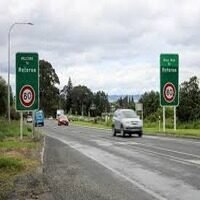Why Are Scottish Road Signs Bilingual?
Scotland is a land of rich history, stunning landscapes, and a unique cultural identity. One of the most noticeable features for visitors and locals alike is the presence of bilingual road signs, displaying both English and Scottish Gaelic. But why does Scotland use bilingual signage, and what significance does it hold? In this blog post, we’ll explore the reasons behind this practice, its historical roots, and its impact on modern Scotland.
The History of Bilingual Road Signs in Scotland
Bilingual road signs in Scotland are a reflection of the country’s efforts to preserve and promote the Scottish Gaelic language. Gaelic, once widely spoken across Scotland, saw a decline over centuries due to political, social, and economic factors. However, in recent decades, there has been a revival movement to protect this ancient Celtic language.
When you land in Scotland and take a Glasgow airport taxi, you’ll immediately notice road signs featuring both English and Gaelic. This isn’t just for tourists—it’s a deliberate policy to reinforce Gaelic’s presence in everyday life. The Scottish government has implemented bilingual signage as part of broader language preservation initiatives, ensuring Gaelic remains visible in public spaces.
Legal and Cultural Reasons for Bilingual Signage
The use of bilingual road signs is supported by legislation, including the Gaelic Language (Scotland) Act 2005, which recognizes Gaelic as an official language of Scotland. This act mandates that public bodies, including transportation authorities, promote the language in their services. Road signs are a key part of this effort, helping to normalize Gaelic in daily communication.
Culturally, Gaelic is an integral part of Scotland’s heritage. By including it on road signs, Scotland honors its linguistic history and educates both residents and visitors about its significance. This practice also aligns with similar policies in other Celtic regions, such as Wales and Ireland, where bilingual signage is commonplace.
Where Are Bilingual Signs Most Common?
Bilingual signs are most prevalent in the Highlands and Islands, where Gaelic has historically been strongest. However, they are increasingly appearing in urban areas like Glasgow and Edinburgh as part of nationwide language promotion. Even if you’re taking a Glasgow Taxis ride through the city, you’ll spot Gaelic on street names and directional signs, reinforcing the language’s relevance beyond traditional Gaelic-speaking regions.
Public Opinion and Impact
The introduction of bilingual signs has received mixed reactions. Supporters argue that it strengthens cultural identity and aids language revitalization. Critics, however, question the cost and necessity, especially in areas where Gaelic isn’t widely spoken. Despite this, surveys show growing public acceptance, with many Scots viewing bilingualism as a positive representation of their heritage.
The Future of Gaelic in Scotland
While Gaelic speakers remain a minority, efforts to revive the language are gaining momentum. Bilingual road signs are just one part of a broader strategy that includes Gaelic-medium education, media broadcasts, and government support. As Scotland continues to embrace its linguistic diversity, bilingual signage will likely remain a key feature of its roads for years to come.
Conclusion
Bilingual road signs in Scotland are more than just practical navigation tools—they’re a symbol of national pride and cultural preservation. Whether you’re driving through the Highlands or catching a ride in Glasgow, these signs serve as a reminder of Scotland’s rich Gaelic heritage. By maintaining and promoting the language, Scotland ensures that its ancient traditions remain alive in the modern world.
Would you like to see more bilingual signage in Scotland? Share your thoughts in the comments!
Public Opinion and Impact
The introduction of bilingual signs has received mixed reactions. Supporters argue that it strengthens cultural identity and aids language revitalization. Critics, however, question the cost and necessity, especially in areas where Gaelic isn’t widely spoken. Despite this, surveys show growing public acceptance, with many Scots viewing bilingualism as a positive representation of their heritage.
The Future of Gaelic in Scotland
While Gaelic speakers remain a minority, efforts to revive the language are gaining momentum. Bilingual road signs are just one part of a broader strategy that includes Gaelic-medium education, media broadcasts, and government support. As Scotland continues to embrace its linguistic diversity, bilingual signage will likely remain a key feature of its roads for years to come.
Conclusion
Bilingual road signs in Scotland are more than just practical navigation tools—they’re a symbol of national pride and cultural preservation. Whether you’re driving through the Highlands or catching a ride in Glasgow, these signs serve as a reminder of Scotland’s rich Gaelic heritage. By maintaining and promoting the language, Scotland ensures that its ancient traditions remain alive in the modern world.
Would you like to see more bilingual signage in Scotland? Share your thoughts in the comments!




















![Top Web Application Penetration Testing Courses Online [2025 Guide] 20 Top Web Application Penetration Testing Courses Online [2025 Guide]](https://guest-post.org/wp-content/uploads/2025/07/Web-Application-Penetration-course-2-150x150.jpg)






















